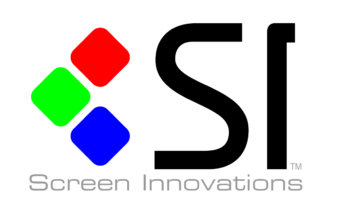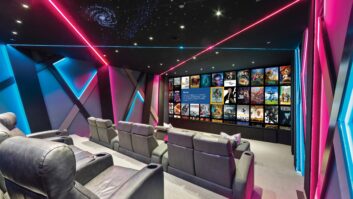BARCELONA – HTC didn’t wait for the Mobile World Congress to launch its new flagship HTC One smartphone in February. And Samsung is waiting for March. 14 to launch its new flagship, the Galaxy S4.
But the international trade show was the venue for the launch of big-screen superphones from other companies, new developments in the upstart Firefox and Tizen smartphone OSs, and Ericsson’s demonstration of an end-to-end infrastructure solution that promises to expand the appeal of live-TV services over cellular.
Big-screen phone introductions included a ZTE smartphone with 5.7-inch display, an Asus model with 5-inch display, a 5.5-inch LG model and a 4.7- inch Huawei model. The will join the HTC One with 4.7-inch FullHD display and Huawei’s International CES introductions of 6.1- and 5-inch models.
Some of the new phones also sport the latest generation of super-fast CPUs with quad-core processors running as fast as 2.3GHz. A quad-core 2.3GHz phone was shown by ZTE.
For its part, Nokia expanded its Windows Phone 8 portfolio.
In services and app developments, Ericsson showed its end-to-end LTE Broadcast solution, prompting Verizon Wireless to announce plans to introduce LTE Broadcast services in 2014.
LTE Broadcast technology could expand the selection of video-content services over cellular because, unlike current live-TV services over cellular, LTE Broadcast is a far more spectrum-efficient one-tomany broadcast-style technology rather than a one-to-one technology. The efficient, high-data-rate LTE technology could be used to stream video such as live sports, breaking news, live TV shows, and broadcast radio and music streaming as well as download video, music, news content and software updates in the background during off-peak times. Carriers could also offer in-venue coverage of events, such as concerts.
In the OS segment of the wireless industry, Firefox web browser creator Mozilla enlisted a quartet of cellphone makers to support the launch later this year of the first smartphones based on Mozilla’s HTML5-based Firefox OS.
Alcatel, LG and ZTE will be the first handset vendors to build Firefox OS devices, with Huawei to follow later in the year, Mozilla said.
The OS is designed to bring down the cost of smartphones by focusing on widely used HTML5 web technology to develop phone features and apps. It’s also designed to accelerate the development of low-cost mobile apps that will meet many more consumer niches than those filled by the curated Apple and Google app stores.
Although Mozilla plans a Firefox Marketplace to sell apps, app developers will be able to distribute apps directly with no need for “gatekeepers,” Mozilla said.
Mozilla touted the OS’s potential in developing countries, but U.S. carrier Sprint has also endorsed the OS.
Although no smartphones using the new opensource Tizen OS were promoted at the show, news reports suggest a Samsung launch in 2013.
The Tizen OS, whose development is led by Samsung and Intel with the aid of other companies, is seen as an entry-level smartphone OS that can be used by carriers and handset vendors to break up the Apple and Android OS duopoly. Carriers also see the flexible OS as a way to sell their own services and apps to ensure they don’t become “dump broadband pipes” for apps and services delivered by others.
In the U.S., Sprint has endorsed Tizen, and a major Japan carrier plans Tizen smartphones.
In handset hardware developments, here’s what showgoers found:
Asus: The company unveiled the Padfone Infinity, an Android 4.1.2 smartphone with 5-inch 1080p display. It converts into a tablet when docked in back of a 10-inch 1080p display that offers its own user interface. The phone, which powers the display, features Qualcomm Snapdragon 600 CPU, a quad-core processor that runs up to 1.9GHz. The phone also features LTE, 2GB RAM, 13-megapixel main camera with backside illumination, and an aluminum chassis. It’s priced at 999 euros, or $1,298. Plans for U.S. availability weren’t disclosed.
Huawei: The Chinese company unveiled what it called the “world’s fastest smartphone” because the phone uses LTE Category 4 technology, which delivers maximum theoretical download speeds of 150Mbps.
The Android 4.1 Ascend P2 features 1.5 GHz quadcore CPU, 1GB RAM, 4.7-inch IPS HD 1,280 by 720 display, and 8.4mm thickness thanks in part to the use of an in-cell touch display. It will be available globally around the second quarter.
LG: The company demonstrated its new Optimus G Pro smartphone, which is the company’s biggest screen phone to date with 5.5-inch IPS display, the company’s first smartphone with FullHD 1080p display, and one of the industry’s first LTE smartphones with quad-core 1.7GHz CPU.
The Android 4.1.2 phone, which doesn’t come with a stylus, features FullHD IPS display with 1,920 by 1,080 resolution at 400 ppi. It comes with 13-megapixel rear camera with 1080p video capture and a new user interface with such new features as dual recording, which lets users capture video with both the front and rear cameras simultaneously for a picture-in-picture experience.
Nokia: Nokia expanded its selection of Windows Phone 8 smartphones with two models said to be more affordable than its current models. Neither features 4G LTE, but both have slower 4G 21Mbps HSPA technology. The 520 is Nokia’s most affordable Windows Phone to date, Microsoft said. That model will come to the T-Mobile network at an undisclosed future date as the Lumia 521. T-Mobile confirmed its version of the phone will not run LTE.
In the U.S., Lumia phones are already quite affordable, though with carrier subsidy. The Lumia 520 therefore might play a role in T-Mobile’s Value Plans, which eschew phone subsidy in return for lower monthly rates. The 720 is not targeted to the U.S.
ZTE: The Grand Memo Android 4.1 smartphone features 5.7-inch 720p display, 4G LTE, quad-core 2.3GHz Qualcomm Snapdragon 800 CPU, 2GB RAM, 16GB of storage and 13-megapixel front camera. Additional details were unavailable.













